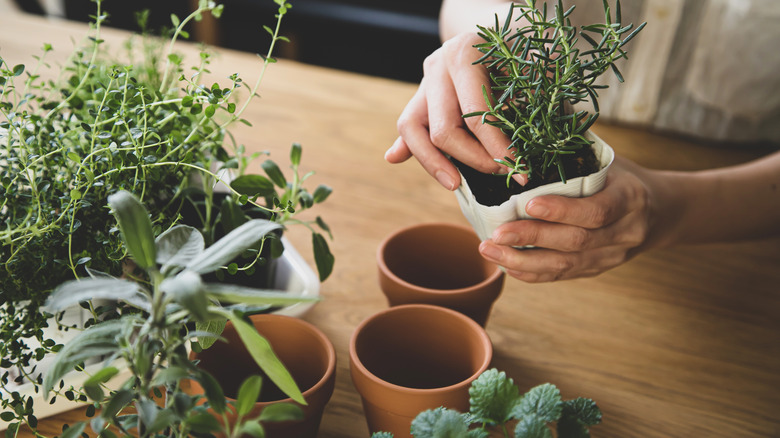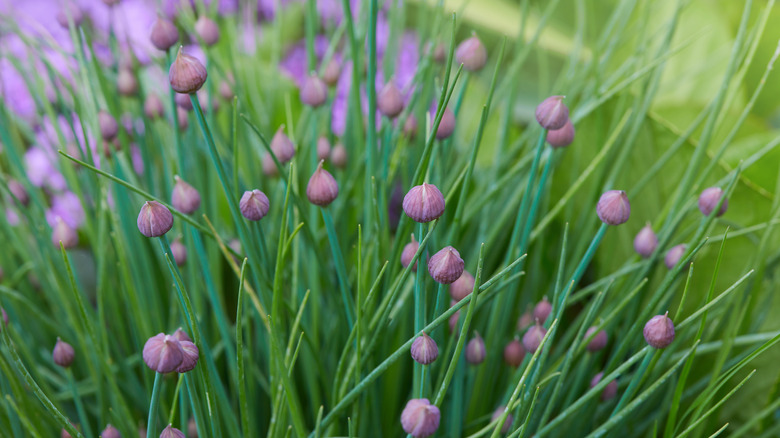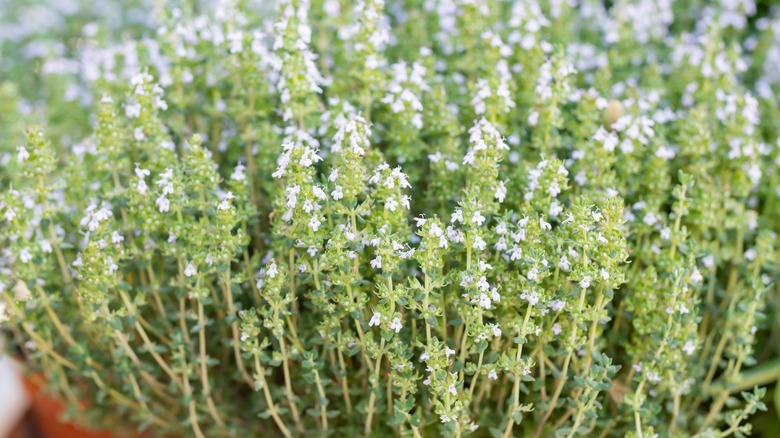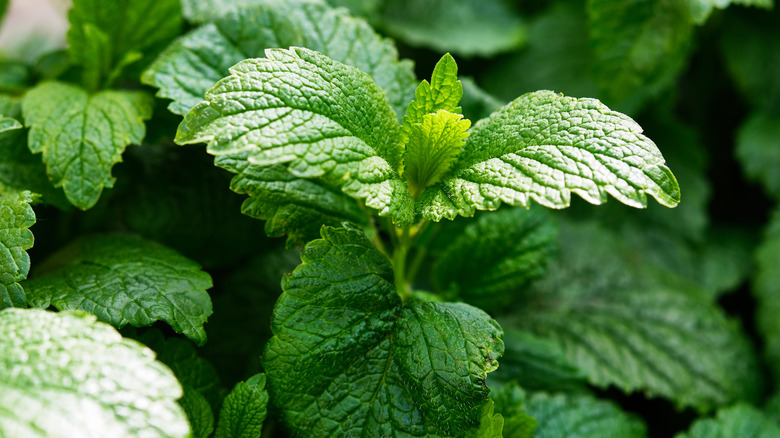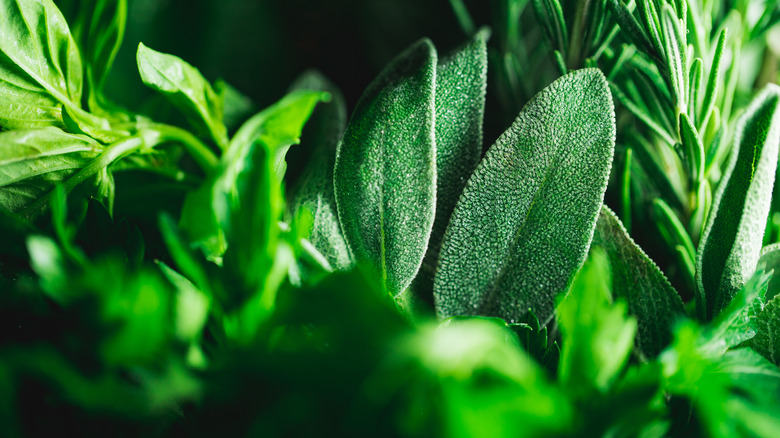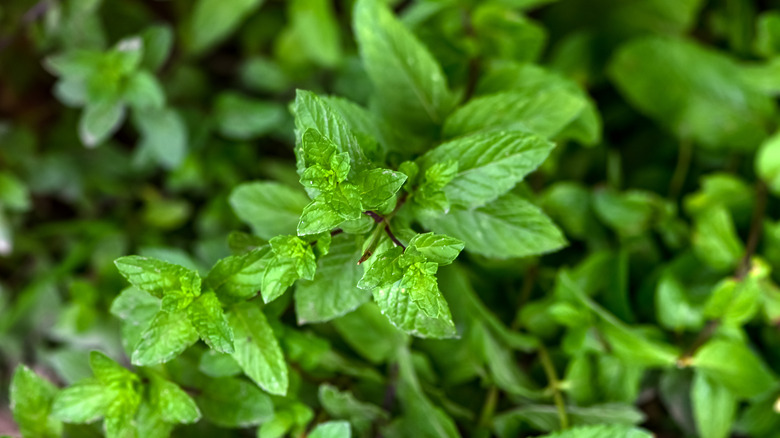Five Easy-To-Grow Herbs For Beginner Gardeners
Gardening is a great way to get in touch with nature. Spending time with Mother Earth has an array of benefits, along with the plants she produces. A 2019 study published in Current Directions in Psychological Science revealed green spaces improve cognitive functions like attention span and memory. Dwelling in nature has shown to bring peace of mind. A garden delivers that sense of nature straight to your backyard or kitchen windowsill.
Nature is more of a delight when you can taste it. An herb garden is an easy way to sow and appreciate the spoils of your labor. Fresh herbs have more pronounced flavors and nutritious benefits than their dry version, too. Not all herbs grow equally. Here we have compiled the easiest ones to start with. These five herbs are great for beginning gardeners, whether your thumbs were born green or are just starting to get their color.
Chives
Chives are first up on our easy-to-grow list. Often mistaken for scallions, chives have a similar milder flavor. Food Network shares, garlic, onion, and chives are all in the allium family — and what a tasty family that is. Chives are a great way to start your herb garden, especially if you have the habit of turning perennials to fall foliage. This grass-resembling herb grows throughout the year. It stands up against dreary weather conditions without the need for protective precautions. There's no need to worry about the cold killing your plant. All chives need are a pot of soil placed in minimal light and water.
A sign you are on the right track is the beautiful violet petals of its bloom. According to the University of Minnesota Extension, the best way to see chives and their flower bloom is by planting them during springtime after frost is past. Feel free to snip your herb as often as you like. Chives make a great addition to your diet and edible garnish for any savory dish.
Thyme
Trust you have the time and skills to grow this next easy herb. Although, it doesn't take many skills. It is another pretty plant that flowers with white and purple petals. Growing thyme from its seedlings is the easiest way to see cultivation. Plant your baby thyme in sun, with semi-nutrient soil, and water regularly. Gardeners World shares that planting thyme in full sun allows its oil properties to fester in the leaves, adding extra flavor. Thyme grows well year-round indoors too. This makes it a keen pick for kitchen windowsill gardens. Adding to the ease, once your thyme becomes a hearty bush, it won't need to be watered as frequently.
The use of thyme dates back centuries. According to The Spruce Eats, it was used as an antiseptic during times of plague. The flavor of thyme is great for cooking, baking, and making cocktails. It adds a garden feel to fresh focaccia bread and can readily substitute other herbs like oregano, rosemary, and parsley.
Lemon Balm
Lemon balm is not Chapstick, but a relative to the popular mint herb. Due to its invasive nature, lemon balm is conducive to running wild and taking over gardens. This makes it a great potted plant that is easy to grow. The Royal Horticultural Society recommends spring to sow lemon balm seeds. However, if you are going the extra convenient route of starting with a seedling, autumn works just as well. This herb is partial to warm weather, so it is best to keep your lemon balm indoors during colder seasons. Just give your herb full sun with a little shade and regular watering. When harvesting this plant, keep a third of the leaves unplucked for continuous healthy growth.
The lemon balm leaves make for more than just a pretty potted plant. Adding lemon balm tea to your diet has several health benefits. MasterClass suggests different ways to chef it up with your new herb, including using it for desserts and vinaigrettes.
Sage
When you think of sage, burning it might come to mind. It is believed lighting sage can ward off evil spirits and negative energy. Perhaps it being easy to grow is the second best thing about it. Like many of our herbs, you can start by planting them indoors or out during the spring. Sage is tolerant to harsh conditions and can stand neglect, so you don't have to spend a lot of time watching it. However, too much water and negative energy wins. Planet Natural Resource Center warns soggy soils and roots are a killer for sage. Let the soil dry before watering again and keep your sage in as much sunlight as possible.
Sage is not only good for its spiritual and medicinal properties, but it is an herb you can cook with. The Pioneer Woman notes that sage is the perfect herb for seasonings. It can make a great stuffer to spice up your Thanksgiving turkey or a compound butter to base that stuffed bird.
Mint
Last but not least, it's the classic gum flavor. Mint, like its cousin lemon balm, is a wild child. Planting it in one corner outdoors will not stop it from taking over the entire backyard. GrowVeg recommends if you want your mint plant outdoors, ensure the garden beds have a clear barrier. For simple gardening, a flower pot will do just fine. Mint is considered the easiest herb to grow. Once it is planted after the frost season, mint will fight cold weather and environmental blemish. It just needs well-drained soil and full to partial sunlight.
Mint is a nice treat to add to dishes. A couple of sprigs from your garden will bring a refreshing taste to hot teas, iced teas, and cocktails. Mint also has health benefits. According to WebMD, mint is not only good for fresh breath, but essential for brain and digestive health as well.
